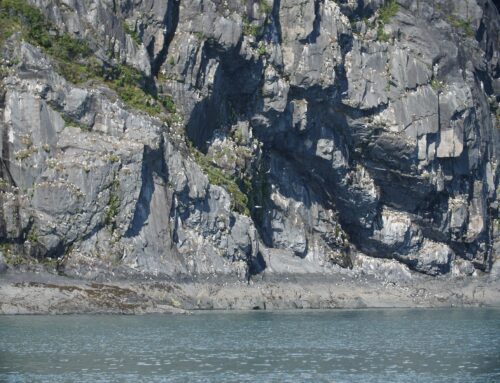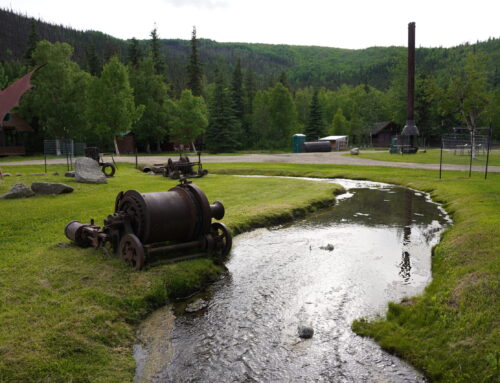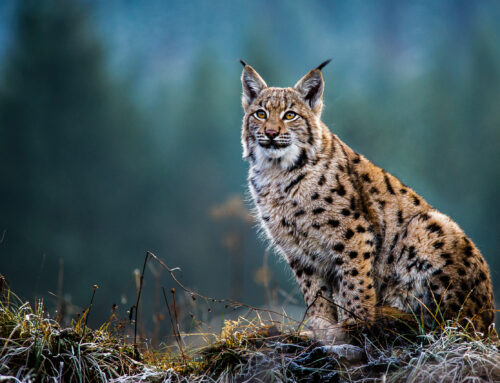Katmai National Park: Valley of Ten Thousand Smokes
In 1912, in the southeastern region of Alaska, the largest volcanic eruption of the 20th century took place. This event, considered the 5th largest eruption in the world on record, was cataclysmic. Before the event, this area, a river valley native peoples used as a passage point, was a watershed region for a few small fishing communities. The volcano was named Novarupta, meaning “new eruption” after this explosion occurred.
Active Novarupta
For over 60 hours, Novarupta spewed ash into the sky. This ash went over 20 feet in the air, provoked earthquakes, and was so strong that seismic activity was recorded in Washington, D.C. What was once the Ukak River Valley was now a 40-square-mile radius of barren ash. Additionally, the once prevalent summit of Mount Katmai collapsed as magma drained and vents opened.
Lava flows cascaded into the valley, some traveling at rates of 100 miles per hour. As the landscape cracked seemingly in half, any water steeped into fissure lines quickly became steam. Thousands of vents along the valley released this pressurized steam, thus gaining the name “Valley of the Ten Thousand Smokes.”
Effects of the Eruption
Over three days, the ash cloud buried Katmai, Old Savonoski, and nearby Douglas. Kodiak Island was in complete darkness for three days as the winds shifted to the East. And, 115 miles from the explosion site, layered in ash two feet deep.
The heat trapped in the rock took decades to cool. Alaska showcased some of the most dramatic effects of the explosion. The ash particles from this eruption eventually reached the entire globe. And Eastward across the northern continent, acid rain fell due to this event.
Storytellers and Explorers
Only a few communities lived in this region during this period. Alaska’s original inhabitants were quite familiar with the instability of the ground and regular earthquakes. These small communities decided to evacuate a few days before, which resulted in zero deaths from this natural disaster.
It is noted that ancestral knowledge and oral tradition, voiced by an elder in the village, warned those to store water and turn their fishing boats over to not fill with ash before the explosion happened. Once this event occurred, the world turned its eyes to this region. Therefore, during the 1910s, scientific expeditions were funded by the National Geographic Society, eventually led to the designation of Katmai National Park.
Scientists who ventured into this region to explore and documented it faced many hazards and tribulations. Robert F. Griggs led these expeditions. In 1916, a flash flood swept across the barren landscapes, washing away anything else left behind.
Novarupta Today
Today, this area is one of the best observation points for noticing the effects of a volcanic eruption of this magnitude. Many rock formations, features, and new life are growing in this valley now. The U.S. Department of the Interior lists the area as “normal.” This means there is no measurable activity to be listed as an advisory.
People visit to enjoy the spectacular views and explore the area. There are many opportunities for camping, hiking, backpacking, and observing stunning views of this wilderness. This area has many mountain summits, glaciers, alpine lakes with waterfalls, rivers, and awe-inspiring geological formations.
Novarupta itself is about 400 m in diameter and 65 m in height. This formation is then surrounded by a two km-wide funnel-shaped structure. This dome is also a plug-like feature with a low-lying ring made of ash and pumice.
References Cited
- “Exploring the Valley of Ten Thousand Smokes.” National Parks Service, U.S. Department of the Interior, www.nps.gov/katm/planyourvisit/exploring-the-valley-of-ten-thousand-smokes.htm. Accessed 17 Aug. 2024.
- “Alaska Volcano Observatory | Novarupta.” Avo.alaska.edu, avo.alaska.edu/volcano/Novarupta.
- “Valley of Ten Thousand Smokes and the 1912 Novarupta-Katmai Eruption – Katmai National Park & Preserve (U.S. National Park Service).” Nps.gov, 2021, www.nps.gov/katm/learn/nature/valley-of-ten-thousand-smokes.htm#:~:text=The%20Plinian%20style%20eruption%20at. Accessed 19 Aug. 2024.






